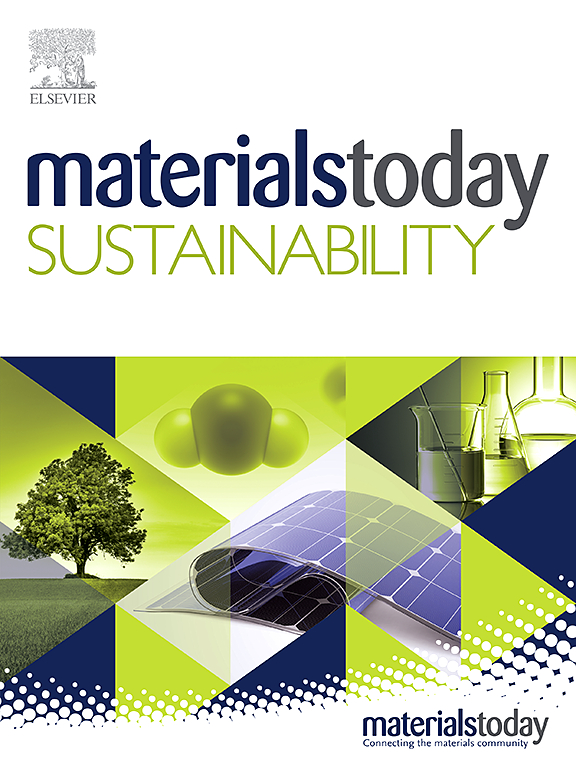A critical analysis of electric arc furnace (EAF) slag for sustainable geopolymer concrete production
IF 7.1
3区 材料科学
Q1 GREEN & SUSTAINABLE SCIENCE & TECHNOLOGY
引用次数: 0
Abstract
The iron and steelmaking industry is undergoing significant transformation to meet the rising demand for steel and its components. Generally, the production of steel is a continuous process carried out by using various furnaces, including blast furnaces (BF), basic oxygen furnaces (BOF), integrated furnaces (BF and BOF), and electric arc furnaces (EAF), with distinct operating conditions. Among these, the EAF has emerged as a sustainable solution for steel production due to its utilization of recycled steel scraps and alloys. However, the processing of steel using EAF generates waste industrial slag that requires appropriate reuse to prevent environmental contamination. The EAF slag contains heavy toxic metals such as zinc (Zn), manganese (Mn), nickel (Ni), cadmium (Cd), chromium (Cr), aluminium (Al), posing risks to water and soil if disposed of in landfills, while incineration is both energy-intensive and costly. Therefore, a sustainable and cost-effective solution is imperative. Geopolymer concrete, made from waste materials, offers numerous advantages in terms of strength and durability. Despite this, there is a lack of literature on the effects of EAF slag on geopolymer concrete. The EAF slag has the potential to be utilized as aggregates or as a pozzolanic material in geopolymer composites. Recycling EAF slag in geopolymer composites not only promotes environmental sustainability but also reduces greenhouse gas emissions. This comprehensive review explores the application of EAF slag in geopolymer composites, examining its synergistic effects on the mineralogical composition, morphological characteristics, environmental consequences, and management, as well as its impact on the hardened properties of geopolymer composites.
求助全文
约1分钟内获得全文
求助全文
来源期刊

Materials Today Sustainability
Multiple-
CiteScore
5.80
自引率
6.40%
发文量
174
审稿时长
32 days
期刊介绍:
Materials Today Sustainability is a multi-disciplinary journal covering all aspects of sustainability through materials science.
With a rapidly increasing population with growing demands, materials science has emerged as a critical discipline toward protecting of the environment and ensuring the long term survival of future generations.
 求助内容:
求助内容: 应助结果提醒方式:
应助结果提醒方式:


